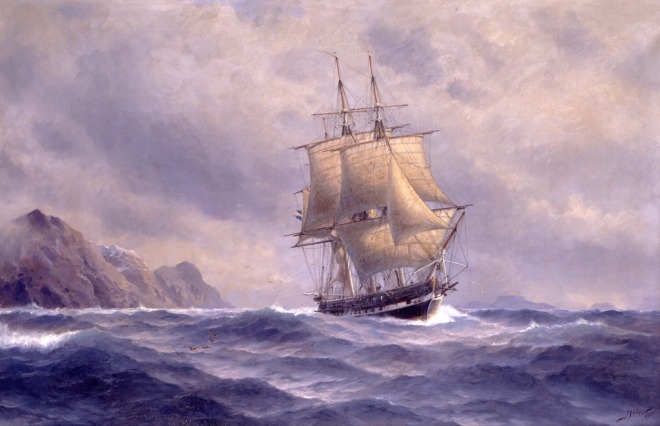In a previous post we talked about how by utilising the three fundamental Stoic principles of Perception, Action and Will, Ryan Holiday proposed to attack the elephant-sized problem of improving our relationship with the obstacles in our lives.
In the post, we only got round to discussing Perception, so I thought it was time to follow up with Action and Will.
Of the three principles, I think that Perception is the one that requires the biggest structural adjustment, and the largest investment of your personal bandwidth. I’ve noticed however, that once you re-frame how you view obstacles, the resource required to then act in response to them, and to then continually endure them appears to be much lower in comparison.

So assuming you’ve read Part 1 of this post, and started to see obstacles as opportunities, and embracing them as chances to improve, you’ll need to foster the ability to act because of them, in spite of them even.
Enter, Action and Will.
Action, hard work and perseverance pays dividends – I don’t think there’s many who’d disagree with that. What’s harder though, is to paraphrase the book and its concepts into actionable, tactical advice. As I stressed in Part 1, just buy the book and read it for yourself – it’s incredible. But that’s not exactly what book reviews and leadership lessons are about – doing all the work yourself. What you’re looking for is advice, guidance, tactics to improve, without having slog through the textbooks.
The concepts are simple, but not easy – and make no mistake, there’s a difference. Similar to the lessons Hal Moore offers, when you’re reading them in a book, they appear obvious. The difference in these concepts is that they aren’t so much reinforcing leadership lessons you may already have come across, but require a substantial shift in perspective. The effects however are immediate, and surprisingly transformative.
If I had to summarise the principle of Action into a short grab, it would be “Do anything. Now”. Just get out there and do something. Anything. There’s a power in action that trumps intent, trumps wishing, trumps day-dreaming, and separates the entrepreneurs from the “want-trepreneurs”.
I’ll admit that I often find myself falling into that second category. My bedside table is filled with notebooks of ideas not implemented, inventions not prototyped, visions not fulfilled, and ultimately, regret. Why? Because I never took that first step.
One of my most quoted quotes is “You can’t cross a chasm in two small steps”, and like many of us who are only too happy to hand it out, I’m terrible at taking my own advice. What’s stopping me? Fear I guess. Fear of rejection. Fear of failure. Fear of embarrassment if no-one buys my invention, or the new business idea fails.

I’m not going to dive down the rabbit-hole of ‘move fast and break things’, or ‘failing fast’ and a hundred other FaceGoogle-esque maxims, other than to say I think that if I took a step, made the leap that it’d probably work out OK.
Besides, even if it didn’t, Part 1 of this review would give me advice on how to re-interpret the obstacle!
“Unselfish action, now at this very moment”
– Marcus Aurileus
Summary. Do the sh!t that you need to do to get things started and don’t stop moving.
Easy to say. Hard to implement.
Worth the effort though.
Will. If Perception and Action are disciplines of the mind and body, then Will is the discipline of the heart and soul.
Let’s say you’re faced with a problem, any problem. You’ve taken the advice in the earlier post and re-framed your perspective. You now see this problem as an opportunity. Tremendous. You’ve taken that first step into action. Tremendous. You fall at the first hurdle. Tremendous. There’s nothing in the manual that says you won’t end up in a feedback loop from hell going around and around and around from Perception to Action with no end in sight.
Enter, Will.
“Made weak by time and fate, but strong in will
To strive, to seek, to find, and not to yield”
– Tennyson, Ulyssess
When Antonio Pigafetta, the assistant to Magellan on his trip around the world, reflected on his boss’s greatest and most admirable skill, what do you think he said? Turns out it had nothing to do with sailing. The secret to his success, Pigafetta said, was Magellan’s ability to endure hunger better than the other men.

We discussed in Part 1, that re-framing your perspective of obstacles was the key to defeating them. Perhaps Magellan saw his interminable hunger as simply an opportunity to master the demands of his body? Perhaps he saw it as simply payment for the opportunity to explore the unknown. Perhaps he just had a small stomach. Who knows? What it does show is that endurance, a desire to move forward, simply not allowing obstacles to stand in your way, is not subject to the obstacles themselves, but simply the way you view them. You can choose to succumb to hunger, to complain you are on half rations, or you can remember that some people, many people, have no food at all. That you’re lucky you’ve got some mouldy bread and scraps of salted beef to nibble on.

So how does all this help those who are leaders, or who aspire to be leaders? Think back to all the bosses you’ve had (or if you’re new to the workforce, the family & friends who hold leadership roles in your life). Now picture an example where things have gone to custard. A project fails to meet a critical deadline. A sales team repeatedly doesn’t hit the monthly sales targets which is now threatening the viability of the entire company. A piece of heavy plant rolls over and traps a worker’s leg. A family member dies unexpectedly.
None of these are particularly good news items. None of these are cause for celebration.
Now then think about the people who stand out in your memory in that situation as being calm, collected and in control. What was it that separated them from the rest of the team or the family? Those who weren’t lost in the emotion of the situation, or those who didn’t run around doing ‘busy’ work without getting done what needed to get done? I’m sure if you reflect on it, these three foundational principles will have been in play – whether you (or perhaps even they) noticed it at the time or not.
Perception. Action. Will.
It’s amazing how calmness is contagious. How a cool head prevails. How this leader may not necessarily have been the ‘boss’, or eldest in the family, but whose implementation of these principles steadied the ship.
Isn’t that what you want from your leaders?
To see clearly.
To act correctly.
To endure and accept the world as it is.
What did you think of today’s post? Do the principles of Stoicism interest you – are you keen to learn more? If you’ve seen examples of non-traditional leaders stepping into the void in a crisis and steadying the ship and you’d like to share, leave a comment below or get in touch via the Contact Page.


2 thoughts on “Action & Will”